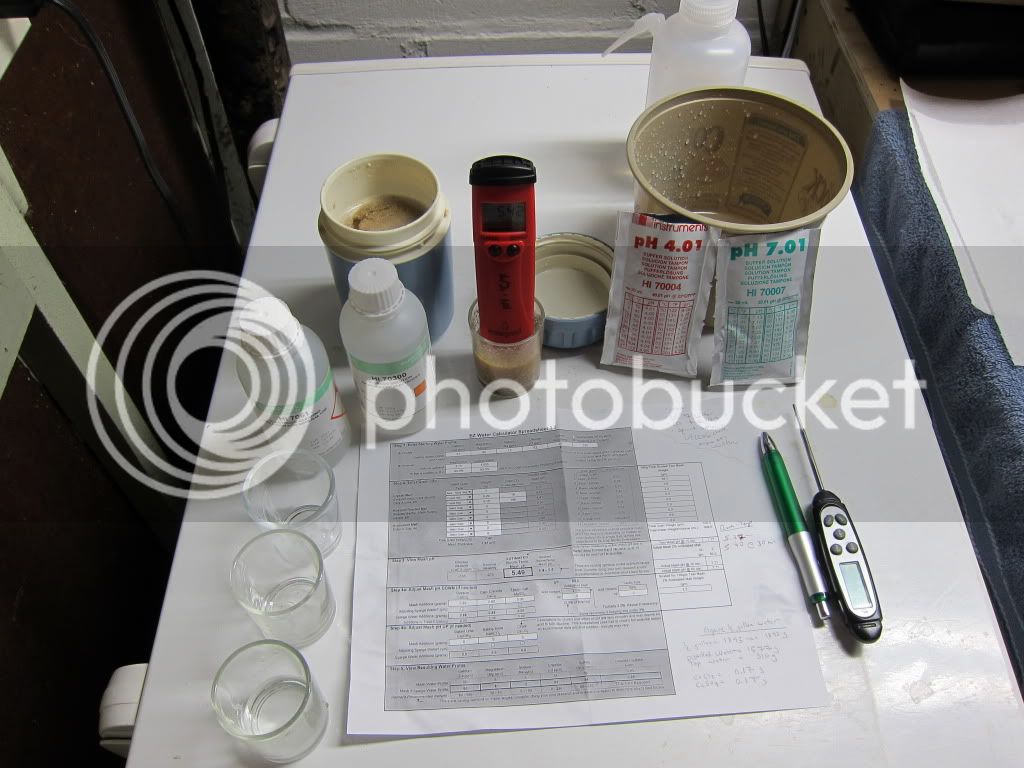DSmith
Well-Known Member
Is 100g of total grains (in about 300mL distilled water for about 1.5 qt/lb ratio) enough to create a small mash to measure pH prior to brewing a new recipe? Does grinding the gain very fine produce results that correlate well to a larger mash with a normal grind? I chose 100g because it's easy to convert any recipe to this by the % of the grains to the total gain.
The purpose would be to determine how much acid would be needed in the big mash (introduced as a wt% acidulated malt), and CaCl2 and CaSO4 would not be used in enough quantities to greatly influence the mash pH. Actual brewing water is 90% RO.
This seems like a managable test to do while heating water and using the same calibrated pH meter for the brewing process.
The purpose would be to determine how much acid would be needed in the big mash (introduced as a wt% acidulated malt), and CaCl2 and CaSO4 would not be used in enough quantities to greatly influence the mash pH. Actual brewing water is 90% RO.
This seems like a managable test to do while heating water and using the same calibrated pH meter for the brewing process.






























![Craft A Brew - Safale S-04 Dry Yeast - Fermentis - English Ale Dry Yeast - For English and American Ales and Hard Apple Ciders - Ingredients for Home Brewing - Beer Making Supplies - [1 Pack]](https://m.media-amazon.com/images/I/41fVGNh6JfL._SL500_.jpg)




























